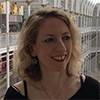Recently, the BBC published a list of animals that may be too ‘ugly’ to be saved. Animals such as the toothy Ganges river dolphin, scaly pangolin and spiny long-beaked echidna all face the threat of extinction, but unlike the cuddly panda or noble tiger, their quirky looks don’t garner them the public support they deserve. However, as pangolin expert Dan Challender points out in the article: “when people see footage of them, they fall in love with them.” When we really look at these creatures, we see they’re not ugly at all.
This is what Come Draw With Me was all about: looking. Looking carefully, looking from many angles, and looking beyond the surface.
Come Draw With Me is a new initiative set up by the Campaign for Drawing, which invites adults to take part in one-off, artist-led workshops in inspirational venues. The fourth Come Draw With Me event took place on Wednesday 21 November at National Museum of Scotland, with artists Helen Denerley, Kate Downie, Alan McGowan, Colin Parker and Catherine Rayner at the helm. This is the first Come Draw With Me to take place in a Museum – and what a perfect place to spark artistic endeavours!
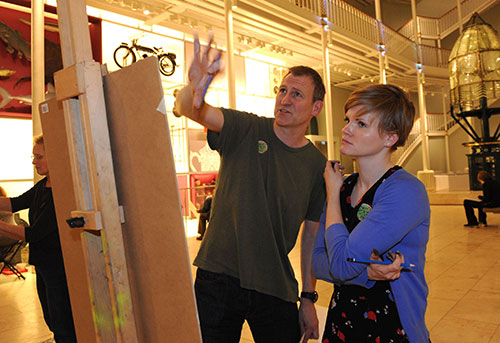
Working in the Museum, it’s easy to rush past objects on display without really seeing them at all. I can’t remember the last time I stopped in a gallery and really observed an object, noticed its tiny details, thought about its history and place in the world. But this is exactly what we’re encouraged to do by award-winning illustrator and author Catherine Rayner, whose workshop I took.
Our challenge is to draw our own book character, based on any of the animals in the Museum. As the creator of the delightful Augustus (a tiger), Ernest (a moose), Norris (a bear) and many more, Catherine knows all about observing animals and capturing their personalities and idiosyncrasies on paper. Her sketchbooks are filled with rapid-fire pencil drawings of her animal heroes, caught in a range of different moods and poses. The key to being an illustrator, she explains, is consistency: once we’ve created an animal character, we have to be able to recreate it throughout a story.
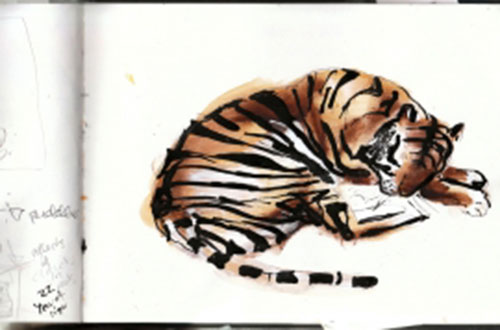
First of all, we have to choose an animal, and to spend time looking at it closely before we even pick up a pencil (or a pen, or a pastel, or any of the other cornucopia of art supplies provided by the event’s generous sponsor Staedtler). I chose a giant anteater, because he seemed to me to be both awkward and odd but also endearing, rather like one of the BBC’s ‘ugly’ animals. While giant anteaters may not be a critically endangered species, they are classed as vulnerable, and, with his long drooping snout and sad brown eyes, I think the Museum’s anteater knows this.

Catherine urged us to think about our animal as a person, to imagine what it is thinking and feeling, what it gets up to and who its friends are. This is also a nice novelty: usually when I’m writing about the Museum’s collection, for our object of the month feature, for example, I’m telling the real story of the artefact, carefully researched by curators and conservators. Here, I get to make it up. I decided that my anteater is a melancholy soul. Who are his friends? He looks lonely; maybe he doesn’t have any.
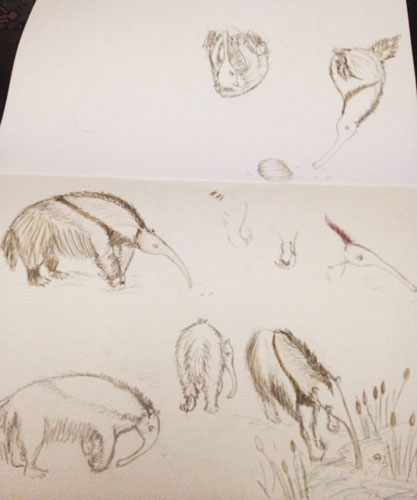
I thoroughly enjoyed this opportunity to spend time in the Animal World gallery, looking carefully at the specimens. Drawing is a wonderful way of getting close to something and understanding why it is the way it is: the anteater’s long front claws look uncomfortable to walk on, curled underneath him as he balances on his knuckles, but are just the tool for scooping out anthills; his sensitive, lightly furry snout is perfectly formed for rooting out his insecty dinner.
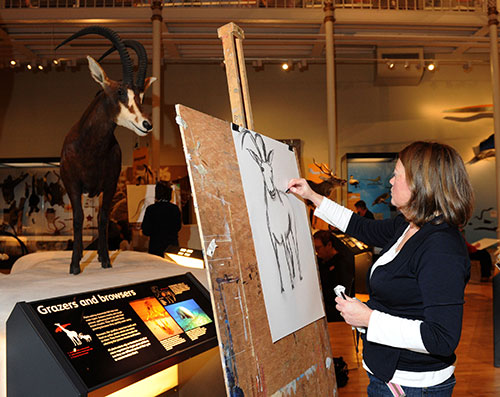
After two hours observing and drawing, we enjoyed a glass of wine and a new visual treat: looking at the artwork everyone else had drawn. I’m afraid my poor anteater looked a bit lost amongst the amazing creations around him, but at least he’d found some friends.
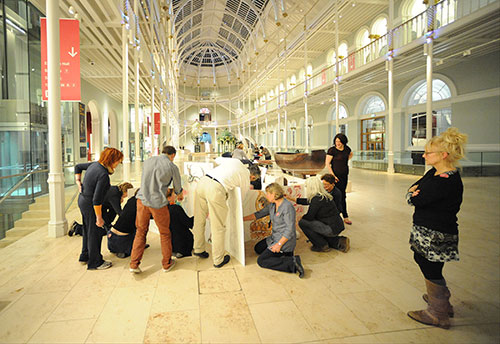

Fancy giving it a go? You don’t have to wait for a special event, simply bring along a sketchbook to the Museum and get drawing! And don’t forget, our annual Christmas Art Competition is back from 27 – 30 December – you might even win a prize!
